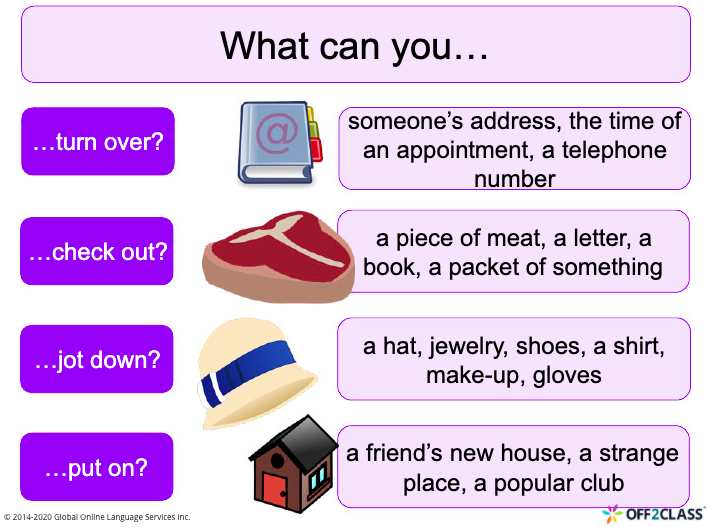5 min read
Share this post

“I love learning phrasal verbs!” said no student, ever. Phrasal verbs are debatably one of the most challenging topics for English learners. If you’re looking for an ESL lesson on phrasal verbs, you’ve come to the right place. All you need to do to tackle this confusing subject is continue reading to learn about resources you can use to teach phrasal verbs.
A phrasal verb combines two or three words, including a base verb. The whole phrase acts as a verb that is different from the base verb used. For example, to pick is different from to pick up or to pick out. As well, many phrasal verbs use the same base verb with different adverbs and prepositions, creating phrasal verbs with entirely different meanings. To complicate things further, there are various categories of phrasal verbs: transitive, intransitive, separable and non-separable. Even though phrasal verbs are often confusing for new English learners, they can still be fun to teach and learn.

The English language is full of phrasal verbs, and English speakers use them constantly. Students often dread them, but there are ways to learn them without the hassle and even with a little fun. Therefore, Off2Class has created this handy introductory lesson plan you can use with your intermediate-level ESL students.
Download the lesson plan here:
This lesson plan is an introduction to phrasal verbs, with a focus on transitive phrasal verbs. Even though it is an introductory lesson plan, it is designed for your intermediate-level students because a strong understanding of advanced verb tenses is recommended. It begins by identifying multi-word verbs and then moves on to introduce phrasal verbs like to call up, to jot down, and to pick out, among others. Students will then move on to other exercises, such as gap-fill and sentence-matching activities to practice.

I love using this as a standalone lesson as well as a supplementary lesson for my advanced students. I keep it handy and use parts of it in my warm-up activities or as a quick review when I feel my students need some extra practice.
If you want to assign homework to your students, or if you need the super-handy teacher notes for this lesson, be sure to sign up for your free Off2Class teacher account. The teacher notes take all of the guesswork out of your lesson, and the homework allows your students to put their newly acquired knowledge into practice. (Bonus: it also includes 150+ other free ESL lessons!)
Do you want more free lessons like this? If so, you can find other lesson plans in the Off2Class ESL Lesson Library. Off2Class has been creating and offering lesson plans since 2015. With this, Off2Class has done all of the hard work for you so that you can spend less time planning and more time teaching!
If you found this lesson plan helpful, be sure to comment below. Also, feel free to share it with your teacher friends!
Share this post
![Possessive Adjectives Lesson Plan [Updated 2025]](https://www.off2class.com/wp-content/uploads/2022/03/Screenshot-2025-07-02-at-4.49.25 PM.png)

